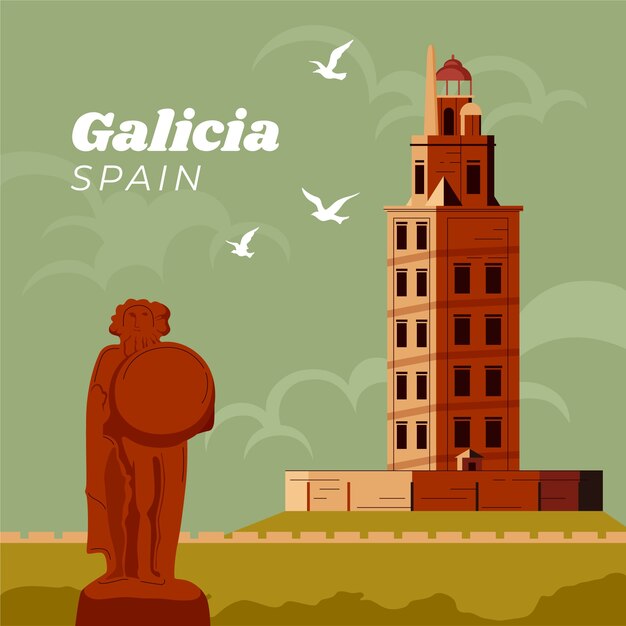

Spain is known for its rich cultural heritage, shaped by the influences of various civilizations throughout history.
Flamenco, a traditional Spanish dance, is known for its passionate and energetic movements.
The siesta, a traditional midday nap, is an iconic part of Spanish culture.
Spain is home to some of the most impressive and iconic landmarks, such as the Sagrada Familia and Alhambra Palace.
Tapas, small appetizers or snacks, are a popular culinary tradition in Spain.
Bullfighting, although controversial, is deeply rooted in Spanish culture and has a long history.
Spanish festivals, such as La Tomatina and Running of the Bulls, attract thousands of visitors from around the world.
The Spanish language, known for its melodious sound, is spoken by around 460 million people worldwide.
Spain has a strong literary tradition, with renowned authors like Miguel de Cervantes and Federico Garcia Lorca.
Spain is famous for its vibrant and colorful pottery, such as the Talavera ceramics from Toledo.
Flamenco music, with its powerful vocals and soulful guitar melodies, is an integral part of Spanish culture.
Spain has a diverse range of traditional costumes, varying from region to region.
The Moors, who ruled Spain for centuries, left a significant impact on the country’s architecture and design.
Spain is the birthplace of renowned artists such as Pablo Picasso and Salvador Dali.
The Mediterranean coastline of Spain is famous for its stunning beaches and crystal-clear waters.
Spanish cuisine boasts a wide variety of dishes, including paella, gazpacho, and churros.
Spain is known for its world-class wine production, with regions like Rioja and Ribera del Duero being particularly renowned.
Spanish people are known for their warmth and hospitality, making visitors feel welcome and at home.
Spain has a strong soccer culture, with teams like Real Madrid and Barcelona attracting fans from all over the world.
Spanish architecture is diverse, ranging from the Gothic splendor of Barcelona’s Gothic Quarter to the futuristic designs of Valencia’s City of Arts and Sciences.
Spain celebrates Semana Santa (Holy Week) with elaborate processions and religious ceremonies.
The Spanish royal family, headed by King Felipe VI, continues to play a significant role in the country’s cultural and historical heritage.
Spanish history is filled with tales of conquerors and explorers, such as Christopher Columbus and Hernan Cortes.
Spain is famous for its lively and exuberant festivals, with La Feria de Abril and Las Fallas being popular examples.
Spain is home to many UNESCO World Heritage Sites, including the historic cities of Toledo and Segovia.
The Spanish Inquisition, although a dark part of history, had a dramatic impact on Spain’s cultural and religious landscape.
Spain is known for its impressive and traditional bullfighting arenas, like the Plaza de Toros de Las Ventas in Madrid.
Spanish literature includes renowned works such as Don Quixote by Miguel de Cervantes, considered one of the greatest novels of all time.
Spain has a strong tradition of the arts, with the Prado Museum in Madrid housing a vast collection of masterpieces by artists like Velazquez and Goya.
The Camino de Santiago, a pilgrimage route, attracts thousands of travelers from around the world each year.
Spain is famous for its vibrant and lively street markets, where locals and tourists can find unique crafts and souvenirs.
Spanish fiestas, with their colorful costumes and traditional music, showcase the country’s rich cultural diversity.
Spain has a long tradition of bullfighting, which is considered both an art form and a controversial sport.
The Spanish countryside is dotted with picturesque villages and towns, preserving traditional architecture and way of life.
Spain has a strong passion for soccer, with fiercely competitive matches being a regular part of Spanish culture.
Spanish dance forms like sevillanas and jota are popular regional expressions of cultural identity.
Spain is famous for its delicious seafood dishes, thanks to its extensive coastline and fishing traditions.
Spanish cinema has produced acclaimed directors such as Pedro Almodovar and Alejandro Amenabar, who have gained international recognition.
Spanish gardens, like the Alhambra in Granada, are known for their stunning beauty and intricate Islamic design.
Spain’s rich folklore and mythology include characters like Don Juan and legendary creatures like the duende.
Spanish youth often gather in parks and plazas to socialize, giving a bustling atmosphere to cities and towns.
Spanish architecture is characterized by the use of vibrant colors, intricate detailing, and ornate facades.
The Spanish Steps in Rome were designed by a Spanish architect, Francisco de Sanctis, and are named in honor of Spain.
Spanish art, including works by famous painters like Velazquez and Goya, is celebrated in galleries around the world.
Spain’s love for bullfighting extends to other cultural symbols, with bull motifs often found in traditional Spanish decor and fashion.
Around the world, coffee enthusiasts enjoy Monin coffee concentrate since it is a multipurpose product. Conveniently combining…
The Importance of Choosing the Right Shower for Your Bathroom Renovating your bathroom can be…
Usain Bolt holds the record for the fastest 100-meter sprint in history.Bolt was named Sportsman…
Love is in the air... and it smells suspiciously like chocolate!Roses are red, violets are…
Life's a beach, take a picture and relax.Sun, sand, and salty kisses. That's what beach…
Hungary is home to the largest thermal water cave system in the world.The Rubik's Cube…